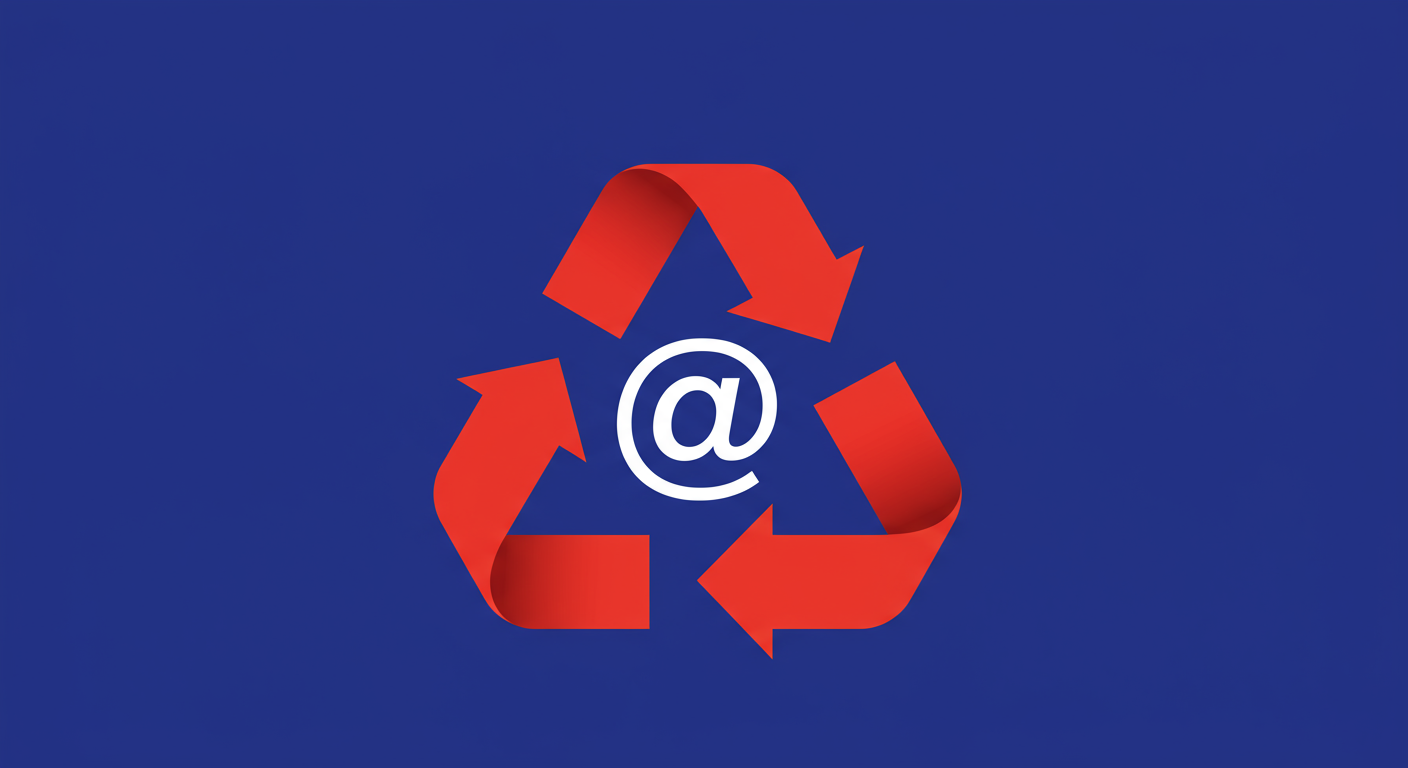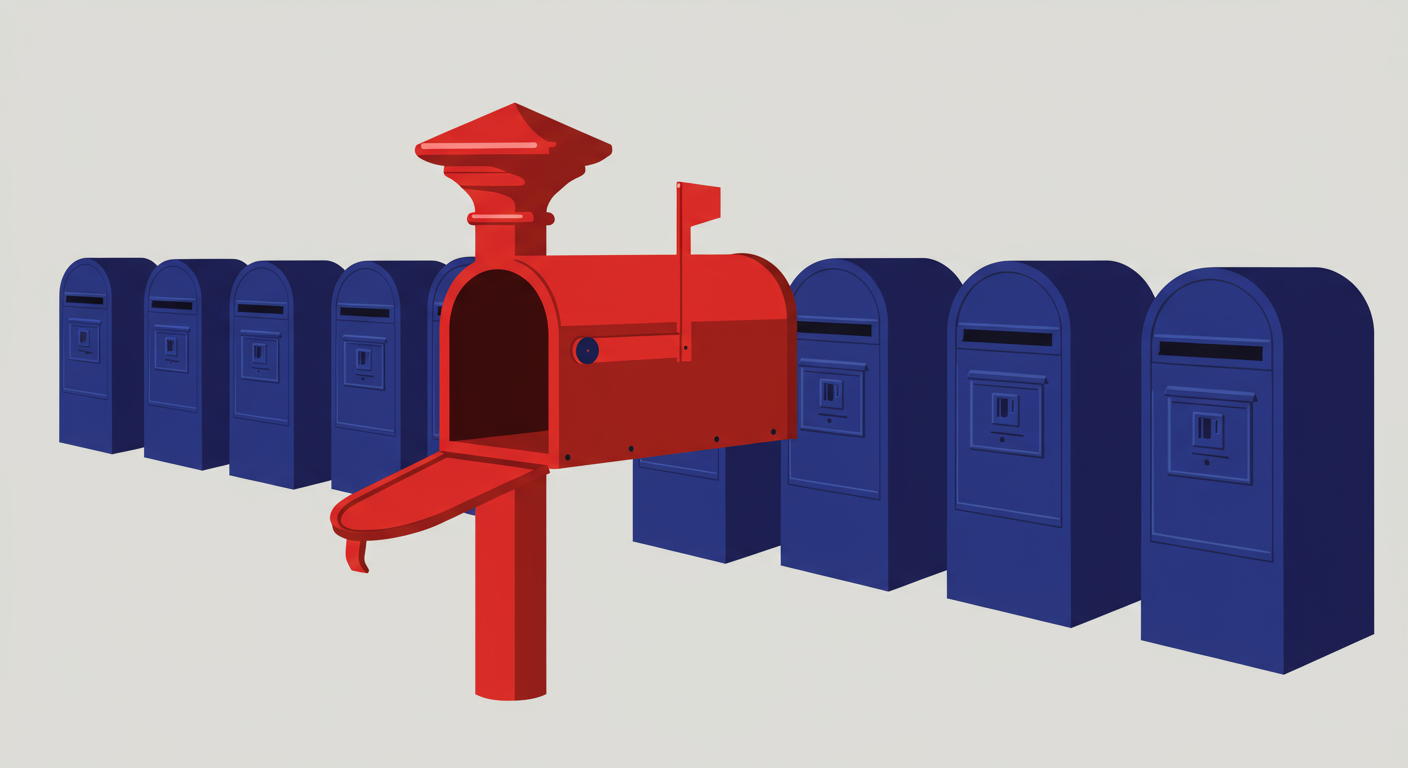What are the different types of spam traps and how do they work?



If you're in the world of email marketing, you've probably heard the term 'spam trap' whispered in worried tones. It sounds ominous, and for good reason. A spam trap, also known as a honeypot, is an email address used by internet service providers (ISPs) and anti-spam organizations to identify senders who aren't following best practices. Hitting one can have a serious, negative impact on your email deliverability.
Think of it as a tool for enforcing the rules of the road. Sending an email to one of these addresses is like running a red light in front of a police car. It's a clear signal to mailbox providers that you might be a spammer, even if your intentions are good. Understanding the different types of spam traps is the first step in learning how to avoid them and protect your all-important sender reputation.
The most hazardous type of trap is the pristine spam trap. These are email addresses that have been created for the sole purpose of catching spammers. They have never been used by a real person, they've never signed up for a newsletter, and they've never been posted publicly in a legitimate way. Because a pristine spam trap has no legitimate owner, there is absolutely no good reason for it to be on your mailing list.
So how do they end up on a list? These addresses are often hidden in the code of webpages, where they can be collected by bots that scrape sites for emails. They are also sometimes submitted through signup forms by malicious actors. The primary way senders acquire these addresses is by purchasing or renting email lists, a practice that is a cardinal sin in email marketing. Using a scraped or purchased list is the fastest way to hit a pristine trap.

The consequences of hitting a pristine trap are severe and immediate. It's considered a major infraction because it proves you have extremely poor list acquisition practices. A single pristine trap hit can get your sending domain or IP address placed on a major blacklist (or blocklist), causing your emails to be blocked by major providers like Gmail, Outlook, and Yahoo. Removing yourself from these blacklists can be a difficult and time-consuming process.
The most common type of trap that legitimate senders encounter is the recycled spam trap. Unlike pristine traps, these were once valid email addresses used by real people. However, the user has since abandoned the account. After a period of inactivity- which can range from a few months to over a year- the mailbox provider deactivates the address, causing emails sent to it to hard bounce.
After this bounce period, the provider may reactivate the address, but this time as a trap. Any email sent to it is now logged as a spam trap hit. This process helps mailbox providers identify senders who are not practicing good list hygiene. If you are still emailing an address a year or more after it became inactive, it suggests you aren't removing unengaged contacts from your lists.
Hitting recycled spam traps is a clear indicator of a stale, unmaintained email list. This is why it's crucial to have a process for sunsetting inactive subscribers- those who haven't opened or clicked an email in a set period, like 6 or 12 months. Continuing to email them not only costs you money but also puts your sender reputation at risk.
While the penalty for hitting a recycled trap is generally less severe than for a pristine one, it's not without consequence. Consistently hitting recycled traps will damage your sender reputation over time, leading to lower inbox placement and eventually filtering to the spam folder. Providers see it as a sign of neglectful sending behavior, which gradually erodes their trust in you as a sender.

A third category of traps stems from simple human error. Typo traps are email addresses with common misspellings of popular domains. For example, someone might accidentally type "@gnail.com" instead of "@gmail.com" when signing up for your list. Anti-spam organizations are aware of these common typos and will sometimes register these typo-domains specifically to operate them as spam traps.
Hitting a typo spam trap is usually a sign that you don't have a double opt-in or confirmation process in place. If you did, the user would never receive the confirmation email to their misspelled address and would therefore never be added to your list. Here are a few examples of common typos:
Along similar lines, some role-based addresses (like info@, admin@, or support@) can sometimes function as traps, especially if they are posted on a website but are not intended for marketing communication. Sending unsolicited marketing emails to these addresses is risky and can contribute to a negative reputation.
Now that you understand what spam traps are, how do you avoid them? The foundation of avoiding traps is building and maintaining a healthy email list. It all starts with your acquisition methods. Never, ever buy, rent, or scrape email lists. This is the number one cause of hitting pristine spam traps. Always collect emails directly from your subscribers through a confirmed opt-in process, often called double opt-in.
Second, you must practice regular list hygiene. This is your primary defense against recycled spam traps. Regularly remove subscribers who are no longer engaging with your emails. If someone hasn't opened or clicked in 6-12 months, send them a re-engagement campaign, and if they still don't respond, remove them. It's better to have a smaller, engaged list than a large, inactive one that poses a risk to your deliverability.
Finally, monitor your sending performance and keep an eye on your sender reputation. Pay attention to your bounce rates- a high hard bounce rate can indicate you have invalid emails on your list. Before sending, especially to an older list segment, consider using a reputable email verification service to weed out invalid addresses. You should also regularly check to see if your domain has been listed on any common email blacklists.
 Spamhaus
Spamhaus 0Spam
0Spam Cisco
Cisco NoSolicitado
NoSolicitado URIBL
URIBL abuse.ro
abuse.ro ALPHANET
ALPHANET Anonmails
Anonmails Ascams
Ascams BLOCKEDSERVERS
BLOCKEDSERVERS Calivent Networks
Calivent Networks EFnet
EFnet
 JustSpam
JustSpam Kempt.net
Kempt.net
 NordSpam
NordSpam RV-SOFT Technology
RV-SOFT Technology
 Scientific Spam
Scientific Spam Spamikaze
Spamikaze SpamRATS
SpamRATS SPFBL
SPFBL Suomispam
Suomispam System 5 Hosting
System 5 Hosting Team Cymru
Team Cymru Validity
Validity www.blocklist.de Fail2Ban-Reporting Service
www.blocklist.de Fail2Ban-Reporting Service ZapBL
ZapBL 2stepback.dk
2stepback.dk Fayntic Services
Fayntic Services ORB UK
ORB UK technoirc.org
technoirc.org TechTheft
TechTheft Spamhaus
Spamhaus 0Spam
0Spam Cisco
Cisco NoSolicitado
NoSolicitado URIBL
URIBL abuse.ro
abuse.ro ALPHANET
ALPHANET Anonmails
Anonmails Ascams
Ascams BLOCKEDSERVERS
BLOCKEDSERVERS Calivent Networks
Calivent Networks EFnet
EFnet
 JustSpam
JustSpam Kempt.net
Kempt.net
 NordSpam
NordSpam RV-SOFT Technology
RV-SOFT Technology
 Scientific Spam
Scientific Spam Spamikaze
Spamikaze SpamRATS
SpamRATS SPFBL
SPFBL Suomispam
Suomispam System 5 Hosting
System 5 Hosting Team Cymru
Team Cymru Validity
Validity www.blocklist.de Fail2Ban-Reporting Service
www.blocklist.de Fail2Ban-Reporting Service ZapBL
ZapBL 2stepback.dk
2stepback.dk Fayntic Services
Fayntic Services ORB UK
ORB UK technoirc.org
technoirc.org TechTheft
TechTheft Spamhaus
Spamhaus 0Spam
0Spam Cisco
Cisco NoSolicitado
NoSolicitado URIBL
URIBL abuse.ro
abuse.ro ALPHANET
ALPHANET Anonmails
Anonmails Ascams
Ascams BLOCKEDSERVERS
BLOCKEDSERVERS Calivent Networks
Calivent Networks EFnet
EFnet
 JustSpam
JustSpam Kempt.net
Kempt.net
 NordSpam
NordSpam RV-SOFT Technology
RV-SOFT Technology
 Scientific Spam
Scientific Spam Spamikaze
Spamikaze SpamRATS
SpamRATS SPFBL
SPFBL Suomispam
Suomispam System 5 Hosting
System 5 Hosting Team Cymru
Team Cymru Validity
Validity www.blocklist.de Fail2Ban-Reporting Service
www.blocklist.de Fail2Ban-Reporting Service ZapBL
ZapBL 2stepback.dk
2stepback.dk Fayntic Services
Fayntic Services ORB UK
ORB UK technoirc.org
technoirc.org TechTheft
TechTheft Spamhaus
Spamhaus 0Spam
0Spam Cisco
Cisco NoSolicitado
NoSolicitado URIBL
URIBL abuse.ro
abuse.ro ALPHANET
ALPHANET Anonmails
Anonmails Ascams
Ascams BLOCKEDSERVERS
BLOCKEDSERVERS Calivent Networks
Calivent Networks EFnet
EFnet
 JustSpam
JustSpam Kempt.net
Kempt.net
 NordSpam
NordSpam RV-SOFT Technology
RV-SOFT Technology
 Scientific Spam
Scientific Spam Spamikaze
Spamikaze SpamRATS
SpamRATS SPFBL
SPFBL Suomispam
Suomispam System 5 Hosting
System 5 Hosting Team Cymru
Team Cymru Validity
Validity www.blocklist.de Fail2Ban-Reporting Service
www.blocklist.de Fail2Ban-Reporting Service ZapBL
ZapBL 2stepback.dk
2stepback.dk Fayntic Services
Fayntic Services ORB UK
ORB UK technoirc.org
technoirc.org TechTheft
TechTheft Spamhaus
Spamhaus 0Spam
0Spam Cisco
Cisco NoSolicitado
NoSolicitado URIBL
URIBL abuse.ro
abuse.ro ALPHANET
ALPHANET Anonmails
Anonmails Ascams
Ascams BLOCKEDSERVERS
BLOCKEDSERVERS Calivent Networks
Calivent Networks EFnet
EFnet
 JustSpam
JustSpam Kempt.net
Kempt.net
 NordSpam
NordSpam RV-SOFT Technology
RV-SOFT Technology
 Scientific Spam
Scientific Spam Spamikaze
Spamikaze SpamRATS
SpamRATS SPFBL
SPFBL Suomispam
Suomispam System 5 Hosting
System 5 Hosting Team Cymru
Team Cymru Validity
Validity www.blocklist.de Fail2Ban-Reporting Service
www.blocklist.de Fail2Ban-Reporting Service ZapBL
ZapBL 2stepback.dk
2stepback.dk Fayntic Services
Fayntic Services ORB UK
ORB UK technoirc.org
technoirc.org TechTheft
TechTheftIn short, avoiding spam traps isn't about finding a magic trick. It's about being a responsible, thoughtful email sender who respects the subscriber's inbox. Clean acquisition, regular maintenance, and diligent monitoring are the pillars of a successful and trap-free email program.
Spam traps are a necessary part of the email ecosystem, helping to keep inboxes free from unwanted mail. For legitimate senders, they aren't something to fear, but something to understand and respect. They serve as a constant reminder of the importance of sending emails only to people who have explicitly asked to receive them.
By focusing on quality over quantity, implementing a double opt-in, and maintaining a clean list of engaged subscribers, you can steer clear of pristine, recycled, and typo traps. This proactive approach will not only keep you off blocklists but will also lead to better deliverability, higher engagement, and a more effective email marketing program overall.












